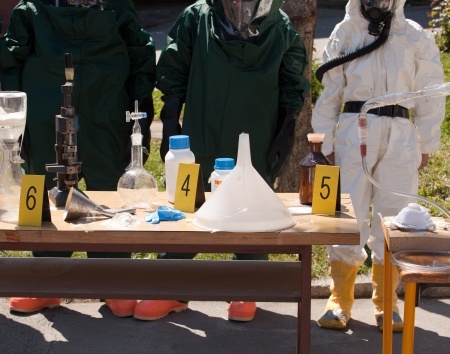
The Court concluded with the following in relevant part: During summation, to convey the supposed threatening nature of defendant’s note, conduct, and words, the prosecutor displayed the still shot from The Shining while making the comments noted above. Unlike in the movie scene, no act of physical violence preceded the handing of the note or followed the handing the money to defendant. The prosecutor nevertheless asked the jury to infer from the photograph and the words “Here’s Johnny!” that defendant’s words and “actions” purposefully put Cervantes in fear of immediate bodily injury.
Comments by a prosecutor in closing that stray beyond the evidence and the reasonable inferences therefrom are inappropriate and improper. The prosecutor here went far beyond the evidence to draw a parallel between defendant’s conduct and that of a horror-movie villain. Defense counsel did offer a timely objection, and the trial court suggested that a curative instruction might highlight the photograph and remarks. Also, the prosecutor’s comments were neither withdrawn nor stricken from the record. The application of the Frost factors here does not undermine defendant’s claims.
Whether defendant purposely put Cervantes in fear of immediate bodily injury — thus supporting a conviction for robbery, not theft — was a close call here. The prosecutor’s comments and the extra-evidentiary movie photo made it more likely that the jury would reject the defense that only a theft occurred. Thus, the prosecutor’s conduct during summation was clearly capable of having an unfair impact on the jury’s deliberations, intruded upon defendant’s right to a fair trial, and constituted reversible error.
To avoid objection or possible error, the Court encourages counsel to disclose to each other and the court any visual aids intended to be used during closing argument, but does not require that practice. Nevertheless, the Court reminds prosecutors that they must ensure their strategy and commentary fall within the boundaries of permissibly forceful advocacy. Prosecutors must walk a fine line when making comparisons, whether implicit or explicit, between a defendant and an individual whom the jury associates with violence or guilt. The use of a sensational and provocative image in service of such a comparison, even when purportedly metaphorical, heightens the risk of an improper prejudicial effect on the jury. Such a risk was borne out here. Visual aids such as PowerPoint presentations must adhere to the same standards as counsels’ spoken words. Slides may not be used to put forward impermissible evidence or make improper arguments before the jury. A PowerPoint may not be used to make an argument visually that could not be made orally. The PowerPoint here fell short of that standard. The judgment of the Appellate Division is reversed, defendant’s conviction is vacated, and the matter is remanded for a new trial.
The Court’s “encouraging” counsel to disclose visual aids without requiring it is as good as encouraging prosecutors to not disclose visual aids. If a picture is worth a thousand words, visual aids should be subject to even greater scrutiny then a prosecutor’s spoken words in summation.
